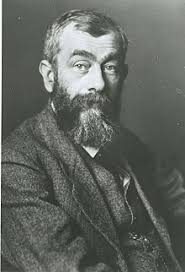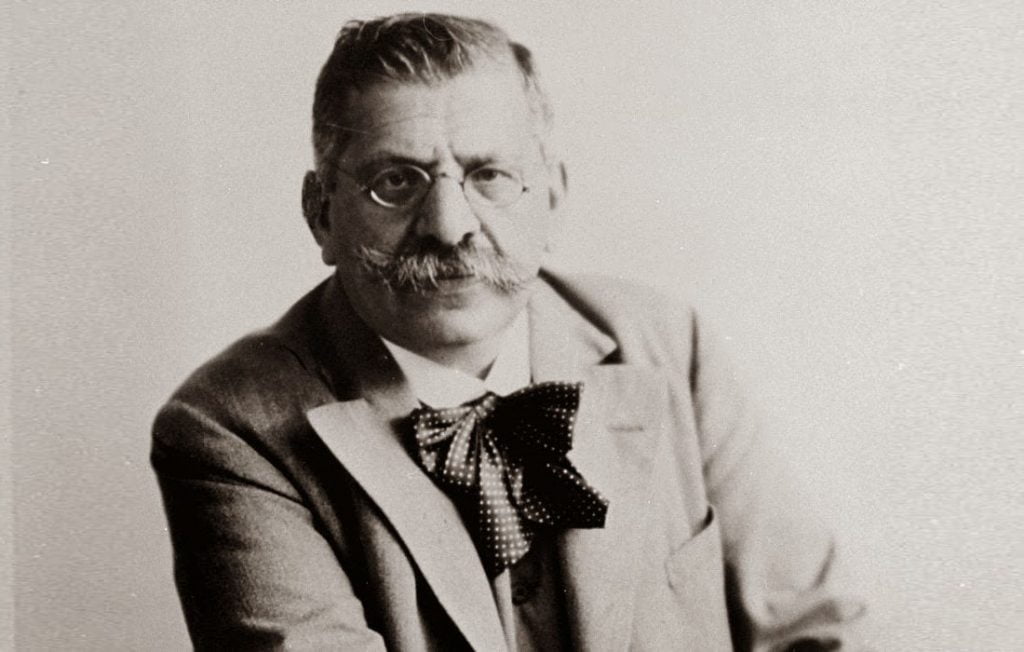Originally posted 2020-10-07 15:41:04.
Does homosexuality exist, other than as a collection of sexual practices? How can it be seen as a separate sexuality at all? After all, sexuality admits only two roles, the male, or active, and the female or passive. In inter-male sex particularly, one party must play the female and the other the male role. This is axiomatic. So for the duration of the sexual encounter they are adopting conventional sex roles. Yes folks, one of them has to be a girl. On the other hand homosexuality, as understood today, implies attraction. Are there really big strong masculine men out there who are attracted to other big strong masculine men? And if so, what happens to the recipient, when he is anally seduced? Can he remain a man? Impossible. He is performing female sexuality and so must himself be female. Which ever way you crack it, this egg devolves to the conventional sex roles of inserter and insertee.
I was set off down this line of thought by a recent throw-away comment by JK Rowling, the author, who said that ‘If there is no sex, then there is no same-sex attraction.’ Well, I ask again, is there any such thing at all? And why should we get so exercised about it? The fact is that the currently dominant Western model, the New Gay Man, simply did not exist until around 1970 and still is restricted to the Anglo-Saxon West. Why is what might well be a passing phase — especially given that there are thousands, probably tens of thousands of years of historical record describing other forms of inter-male sex — so revered? Why is ‘gay’ on a pedestal, untouchable and apparently above criticism?

The concept of homosexuality
The concept of homosexuality did not exist at all until the 19th century. It appeared with the advent of psychology and, following soon after, sexology. Then, however, it was taken to describe feminine, sexually receptive men who wanted to have relationships with masculine men — who were not considered homosexual themselves.
Towards the end of that century, however, several Germans, for example, Benedict Friedlaender, proposed a different form of inter-male sex, in which masculine men would be attracted to other men. This understanding was based in his reading of Plato, although the Greek eschewed any form of sexual contact between men. Friedlaender’s proposition was essentially pederasty, which was rife in Germany at the time, with a few modifications to make it more acceptable to his refined (sic) tastes. Far from seeing themselves as effeminate, these men considered that their sexual attraction to males, especially younger ones, made them more virile. They immediately set about extolling the love of boys (for men) and the love of men (for boys). This would produce a generation of better and greater men, more masculine, more manly.
The New Gay Man
They had invented what I call the ‘New Gay Man’. This is an aggressive, resolutely masculinist, highly politicised movement that rejects any level of feminisation and indeed, is strongly critical of all forms of Male-to-feminine transition. Although it claims to be ‘egalitarian’ it is really just pederasty in a nice new suit.
This movement had a slow start. It was not until the advent of National Socialism that it really took off and then only in Germany. The philosopher Martin Heidegger joined the Nazi Party in 1933 and sought to put philosophy at the service of Nazi ideals.
(The author) establishes beyond doubt that Heidegger believed himself to be a “spiritual guide” to Hitler and his followers…as early as the 1920s…he was developing a racial doctrine and propounding antisemitic ideas.1
(With that kind of provenance you’d have thought the New Gay Man would have had no chance for success today, but USica is…different. Although the true ‘motherlode of bad ideas’ itself, it is prone to claiming other people’s as its own.)
Freidlaender and Hirschfeld
Benedict Friedlaender had once been a follower of Magnus Hirschfeld, the ‘father of modern sexology’ who firmly believed in the innate feminine, indeed female nature of male homosexuality. This grossly offended Friedlaender, since he was in denial of his own femininity. Thus began the schism between proponents of what be might call the Sexual Inversion school and what was to become the Masculinist school.

The former held that homosexuals actually had the sexuality normally found in the opposite sex and that this was innate, not a matter of choice or the result of experience, while the latter held that male attraction to other males, especially younger ones, was a sign of virility, and that this male sexual desire had deep roots in male group bonding.
Adolf Brand
Hirschfeld had enemies in Berlin’s gay scene. His interest in effeminacy amongst homosexual men, his attention to lesbianism, and his fascination with cross-dressing amongst both gay and straight populations (he coined the word “transvestism”) offended men who believed that their lust for fellow-males, especially for younger ones, made them more manly than the rest of the population. Being married to a woman was not seen as incompatible with such proclivities.
In 1903…the writers Adolf Brand and Benedict Friedlaender formed a group called Gemeinschaft der Eigenen, or Society of Self-Owners…Brand’s magazine became their mouthpiece, mixing literary-philosophical musings with mildly pornographic photographs of boys throwing javelins. In the same camp was the writer Hans Blüher, who argued that eroticism was a bonding force in male communities; Blüher made a particular study of the Wandervogel movement, a band of nature-hiking youth (which later gave rise to the Hitler Youth). Nationalism, misogyny, and anti-Semitism were rampant in these masculinity-obsessed circles.2
The emphasis on the eroticisation of young males, including boys, should leave us in no doubt: this was a pederastic movement in which these boys were used as women by profoundly misogynistic men. The stage was set for a power-struggle for recognition between these pederasts and Sexual Inverts, who were, broadly, proto-feminist and protective of the vulnerable. Most of all, however, they fully embraced their own feminine natures and sought only ‘real men’ — by which they did not mean a Friedlaender masculinist.
In her book ‘The Naked Civil Servant’ Quentin Crisp, a Sexual Invert, describes her relationships with men and it is clear that these were not ‘gays’. They were ordinary men who were attracted to highly feminised males, because they were feminine and most importantly, they treated Crisp and others like her as women.
Friedlaender and his fellow-travellers were Platonists as well as misogynists, who thought that any romantic engagement with feminine persons (whether or not they were actually female) was actually corrupting for men. Women were seen as baby-factories and boys were for sexual pleasure; thus was the Third Reich’s patriarchy established, which of course, has been transplanted into the modern West through the New Gay Man cult, which is itself a pure patriarchy (albeit with no fathers).
They hated the feminine Inverted type of male, which is seen in microcosm in the bitter and lasting feud between Friedlaender and Hirschfeld and of course, in the persistent vilification and suppression of feminine homosexual males and transsexuals that we see within the New Gay Man cult today.

History
Study of the historical literature and of the situation extant across the world today suggests that both the Sexual Inversion and the Masculinist models are viable. While in most cultures it does appear that one tends to be dominant over the other, both appear to be present everywhere. It is certainly the case that homophilia, if not actual inter-male sex, is a central part of group bonding amongst soldiers, sportsmen and other groups of men who perform together, especially where there are no women. This is what is popularly and euphemistically called ‘brotherly love’ or ‘bro culture’ and while in the West today men go to great lengths to deny or suppress any suggestion of actual physical love, it were not always so, by any means.
In addition, pederasty, the root of the masculinist New Gay Man cult, appears to be directly derived from male bonding within hunter-gatherer groups. In these, adolescent boys are ‘apprenticed’ to older, experienced men and taught how to hunt and to survive. There is plenty of evidence of formalised sexual activity in these cultures, again both from contemporary ethnography and the historical record. (see HERE Sambians)
The Nazis
In Germany, the Nazi Party’s access to power changed everything. Identifiable Inverts of all types were persecuted. Hirschfeld’s offices were raided, wrecked and the thousands of case notes he made destroyed. Countless Inverts, both male and female, were arrested and sent to the death-camps.
This persecution has been the basis of the modern argument that the Nazis were ‘anti-gay’, which is of course an anachronism anyway. In fact they were anti male femininity and female masculinity; they were politically motivated transphobes, in other words. They had no problem with Friedlaender’s Platonic, masculinist vision and German officers and men buggered their way through the bottoms of boys across occupied Europe, throughout World War II, with absolutely no sanction at all.
This is interesting because through history, the Inversion model has largely been tolerated, if not more. In Europe until the 18th century, men were expected to be attracted to both women and adolescent boys, usually dressed somewhat like girls. This probably has to do with the protection of female virginity that was universal in European culture until recently. With no women available, or those that there were, prostitutes likely to be infected with STIs, pretty boys were an alternative.
After the war, many Germans moved to the United States to have a better life, especially the educated ones. Amongst these were both Inverts and Friedlaender-type masculinists and in their new homes they continued to push their ideologies.
Both camps

Both camps had been represented in the US prior to the War but always remained somewhat clandestine. After it, there was a sea change, as millions of servicemen, including both Sexual Inverts and masculinists, were demobilised. For the first time, through their service in the armed forces, they had been able to indulge themselves sexually and they had no intention of stopping. The modern Western ‘gay’ movement began right there, with the establishment of the Mattachine Society and the female Sisters of Bilitis.
The conflict continued
The conflict at the heart of the Western New Gay Man continued, but largely unnoticed by the broader public. Harry Hay, the founder of the Mattachine Society, who was a transvestite and therefore an Inversionist as well as a card-carrying Communist, was ousted by the masculinists because they found both his femininity and his political radicalism embarrassing; not for nothing was Friedlaender so closely associated with the Nazis, who hated the Communists too. For twenty years the struggle for supremacy went on, but in the early 1970s, the masculinist New Gay Man finally gained the upper hand, largely because of the social horror of male femininity that had developed in US culture, partly in response to increased media attention.
Negative attention of this type had been ongoing for years. Ed Wood’s 1953 gender-shocker ‘Glen or Glenda‘ starring himself and incredibly, Bela Lugosi and Alfred Hitchcock’s ‘Psycho‘ (1963) for examples, deeply troubled audiences and planted the seed of suspicion of male femininity. The latter in particular associated transvestism with a violent, psychotic serial killer, a thoroughly nasty theme that continues to be exploited, for example in JK Rowling’s ‘Troubled Blood‘ (2020, written as Robert Galbraith) which casts a male transvestite as a serial killer of women.
Erasure
It is forgotten, today, that the famous Stonewall Riots of 1969, seminal events, at least in retrospect, were actually organised and led by two transvestites, Marsha P Johnson and Sylvia Rivera. Then again, Mack Friedman, in Strapped for Cash: A History of American Hustler Culture (Alyson Books 2003) discusses the widespread nature of inverted culture in white US society prior to the War; and again, this is quietly forgotten.
Indeed, in one of the most egregious examples of historical revisionism, at least in this field, in recent years, Johnson and Rivera were deleted from Roland Emmerich’s 2015 film ‘Stonewall’ and their role given to a late adolescent boy. The irony of the clear statement that pederasty is indeed the foundation of the New Gay Man cult appears to have been lost on the director, whom we suspect was too busy thinking about cock to notice.
These things are not forgotten out of carelessness. They are because of the relentless efforts of the masculinist New Gay Man to erase them from history and to insist that his model is the only one.
The New Gay Man succeeded
Sadly, the masculinists succeeded. While many individual Inverts soldiered on with their feminised presentation for as long as they could, they had all but been eradicated by 2010. In Britain, numerous high-profile feminine homosexuals like Kenneth Williams, Julian Clary and many others either died or found their careers over. Female impersonators became more-or-less straight comedians. The accepted face of male homosexuality in the West had become the New Gay Man; and having won he would tolerate no challenge.
However, Sexual Inversion, now usually given the more Politically Correct title of ‘transgender homosexuality’, has burst out of the closet again and we should take note. The New Gay Man’s triumph is not quite as complete as he would like us to think.
Quack quack quack.
From its very beginning, psychology has sought to differentiate between that which is ‘normal’ in terms of behaviours and that which is ‘not normal’. The Devil of course, is in the detail: what is meant by ‘normal’?

Western culture today is philosophically based on Platonic thinking, largely because of Christian influence. Richard Carrier has correctly identified Pauline Christianity, the foundation of Catholicism and therefore all modern Christian forms, as being applied Middle Platonism. (On the Historicity of Jesus: Why We Might Have Reason for Doubt. Sheffield Phoenix Press, 2014)
Plato’s aim was to produce an ideal society, in which there could be no aberration from the ‘normal’; ever since its inception, Christianity has striven to establish a ‘normal’ baseline and force society to operate along those lines.
However, Plato was opposed by his student Aristotle. It would not be true to call him a pragmatist because that school of thought is modern, having been established by John Dewey. However, in his 1932 book ‘Ethics’, Dewey acknowledges his debt to the Greek and outlines the common ground. It would be fair to say that had Aristotle not written as he did, Dewey would have been obliged to invent him. Aristotelian thinking is far less concerned with idealism and more so with how to deal with the practical problems of life — as one might expect, from the scion of a family of doctors.
Plato and Aristotle, then, define the essential conflict of Western culture: it is Platonic in theory but Aristotelian in practice.
This caused a problem in the discussion of homosexuality. To a Platonist, this did not fit into a structured, ideal world. Indeed one of the leading early sexologists, Richard Krafft-Ebbing, considered all sexual intercourse that was not strictly procreative to be aberrant, along with masturbation, voyeurism and so on.
Pathologising inter-male (and inter-female) sex
Prior to the 19th century, as noted above, homosexuality did not exist. In fact, the term ‘homosexual’ is thought to have been coined in 1868. But there was plenty of sexual activity going on between males and between females long before that. In fact, as far as we know, this has always been a function of human society. These behaviours did not suddenly appear in 1868; what happened was that they became not only ‘abnormal’ — and thus conflicting with Platonic thinking — but also pathological — which meant they might be ‘cured’ — which, of course, delighted the Aristotelians.
This understanding, that homosexuality is abnormal and that it can be cured, simply entered 20th century science with hardly a question asked. But this was done with no real consideration of what it actually is. This was far worse in the case of Sexual Inversion, which was more obvious than covert masculinist homosexuality.

From the oldest writings we have, we know that males had sexual activity with other males and females with other females. This is incontrovertible. Plato himself wrote about it, but he was a late-comer. In the Ancient World it was either approved or ignored. It is discussed in the Hindu Vedas, but is not condemned and in fact it was ubiquitous in the many pre-Christian cultures of Europe and elsewhere. Indeed, we might suggest that one of the most unusual characteristics of Christian culture is in its suppression of it.
It was not until the adoption of Christianity by the Roman Empire that it came to be systematically condemned; but what became most vilified was not the idea of same sex love (homophilia) or even attraction, but instead the practice of male penile insertion into the anus of another — buggery. This was compounded by a horror, first expressed in Graeco-Roman culture, of male femininity, which amounted to little better than misogyny.
One only has to read the literature, from Roman times right up to the 20th century, to see how intense this was. Buggery and male femininity were condemned as bestial, loathsome, horrific and a litany of other terms of abuse. Even supporters found it necessary to couch their writing in terms that overtly condemned it while covertly supporting it, such as the legendary Orientalist, linguist and explorer, Sir Richard Burton.
After World War 2
After World War II and the exodus of the leading German thinkers to the USA, the conflict between the Inverts and the Masculinists entered academia. Here, the latter became dominant quickly. This was not only because of the Platonic basis of their case, which was intellectually pleasing to academics, but also because of the historical and ongoing prevalence of pederasty – in its traditional, pre-Friedlaender form — within the academy itself.
Pederasty had in fact been central to both German and English education systems, particularly before they became co-educational. (Lesbianism was commonplace in the rather smaller number of all-female schools.) While the US’ academy was still developing, it imported many European ideas; something that today seems strange, given that the US now exports its ideas, no matter how insane.
Feminists
However, the New Gay Man, especially within the Academy, was further boosted by the arrival of a new group, radicalised lesbian women. Exactly as the Masculinist followers of Friedlaender had rejected Sexual Inversion in males, so these lesbians rejected it in females. So while the popular pre-war image of a typical lesbian was a butch cross-dresser like Gertrude Stein, soon the model changed.
These new lesbians often identified as ‘feminists’ primarily and they quickly allied to the Masculinist New Gay Man; after all, he was not trying to penetrate them. This set the scene for a huge social inversion, one which has no real equivalent in the historical record. It can be summed up in a line that became popular: ‘We are just like you but we love each other.’ often accompanied by somewhat trite images of two conventionally feminine women kissing or two conventionally masculine men doing the same.

Homogender homosexuality had arrived; it might have been just the repackaging of older phenomena in shiny new clothes, but it served well enough to dupe a gullible public — and it also reinforced transphobia. ‘Well, if you’re just like us, no problem. It’s not like you’re pretending to be girls, is it?’ But the New Gay Man has always been ready to sell the Inverts down the river; he considers it a social good to eradicate — in public a least — male femininity.
The New Gay Man was completely new.
This phenomenon was something completely new. It had never happened before, or at least there is no record of it. While the evidence for transgender homosexuality and conventional pederasty is enormous, that for the masculinist, homogender form, is noticeable by its absence; and it certainly never constituted a revolutionary political movement, which is exactly what the New Gay Man is.
Toxic and Pernicious
When ‘gay’ activists claim a historical provenance, they are lying, because their particular form of same-sex love was constructed only some fifty years ago; it has no historical provenance except in interpretations of Plato’s writing by moderns like Friedlaender. It is a chimaera with no substance; but at the same time, it is one of the most dangerous influences on the modern West, because, perhaps paradoxically, it plays to the radical proposition, as first outlined by Marx and Engels in the Communist Manifesto, that gender itself had to be eradicated. That is a toxic, pernicious and corrosive suggestion, because to erase gender requires erasing our entire society; which is, of course, what the radicals actually want.
1John Keenan. Heidegger, Hitler’s ‘spiritual guide’. https://www.theguardian.com/commentisfree/2010/jan/20/martin-heidegger-nazi-hitler accessed 07/08/2020
2Alex Ross. The Berlin Story. The New Yorker, 26 Jan 2015 https://www.newyorker.com/magazine/2015/01/26/berlin-story accessed 07/08/2020




